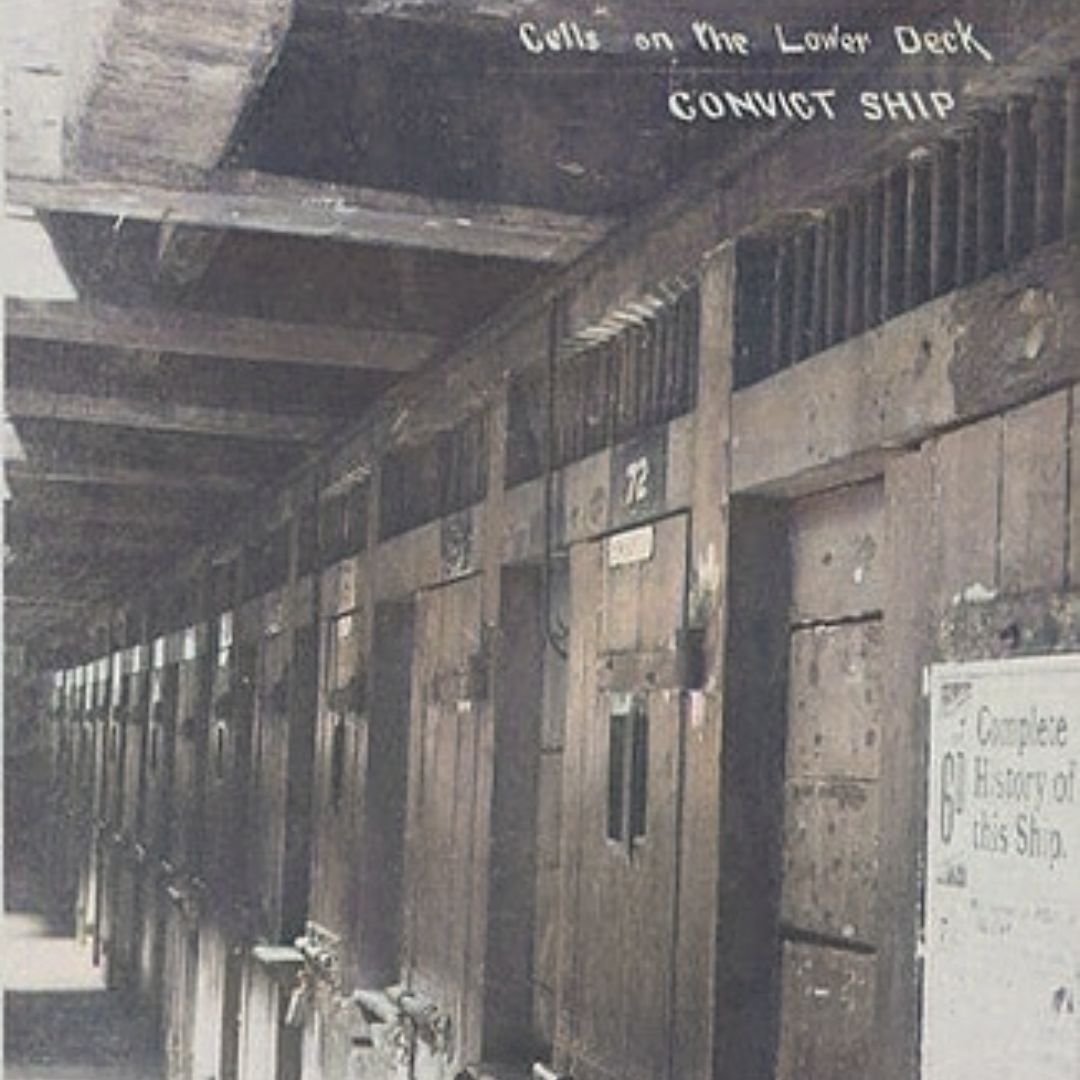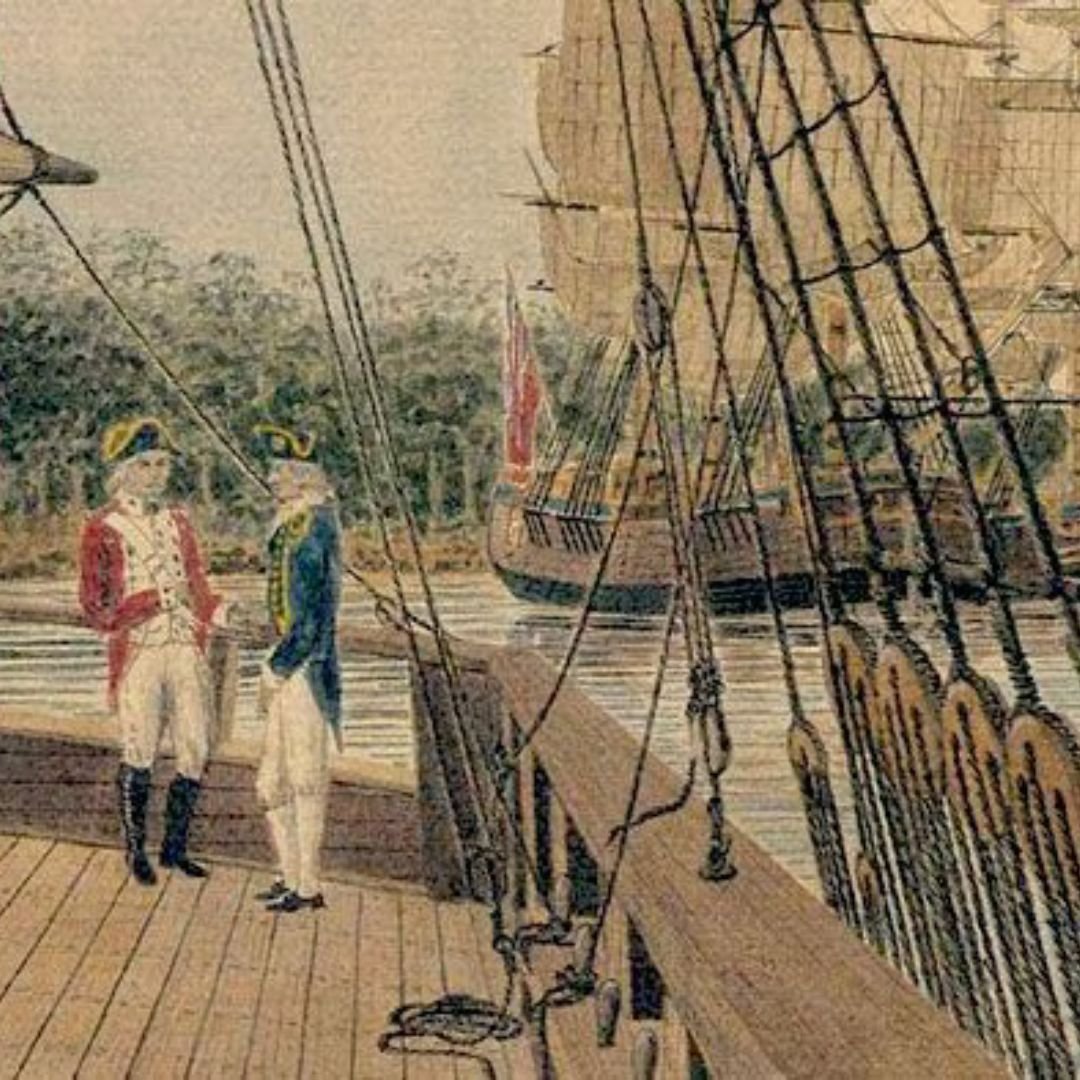160,000 convicts transported from England to Australia
Between 1788 and 1868, about 162,000 convicts were transported from Great Britain and Ireland to various penal colonies in Australia.
The majority of convicts were transported for petty crimes.
Things that got you shoved onto a cramped, scurvy-ridden boat included: stealing fish from ponds or rivers (fishing?); taking someone's handkerchief or hairbrush and theft of bacon. You know, the small stuff.
Meanwhile, more serious crimes, such as murder, were punishable by death.
The crimes that make up the ‘19 Crimes’ include:
Grand Larceny, theft above the value of one shilling.
Petty Larceny, theft under one shilling.
Buying or receiving stolen goods, jewels, and plate...
Stealing lead, iron, or copper, or buying or receiving.
Impersonating an Egyptian.
Stealing from furnished lodgings.
Setting fire to underwood.
Stealing letters, advancing the postage, and secreting the money.
Assault with an intent to rob.
Stealing fish from a pond or river.
Stealing roots, trees, or plants, or destroying them.
Bigamy.
Assaulting, cutting, or burning clothes.
Counterfeiting the copper coin...
Clandestine marriage.
Stealing a shroud out of a grave.
Watermen carrying too many passengers on the Thames, if any drowned.
Incorrigible rogues who broke out of Prison and persons reprieved from capital punishment.
Embeuling Naval Stores, in certain cases. (19 Crimes, “Crimes”)
Between 1788 to 1868, around 162,000 lightweight criminals were banished to Australia.
Approximately 1 in 7 convicts were women, while political prisoners, another minority group, comprise many of the best-known convicts.
Once emancipated, most ex-convicts stayed in Australia and joined the free settlers, with some rising to prominent positions in Australian society.
Almost 20% of modern Australians, in addition to 2 million Britons, have some convict ancestry.
Crime rates in Britain were high in the 17th and 18th centuries, this was primarily because there was no police force back then.
As a result, people often resorted to crime in order to make a living - the most common being theft and robbery.
The punishment for stealing in Britain at the time was usually imprisonment, however, so many people were being arrested for minor crimes, that the regular prisons ran out of room for them.
The British government came up with a clever solution, they decided to use old warships as prisons.
These ships served as 'temporary' prisons for nearly 100 years, there can be no doubt that life on the prison hulks was tough.
Inmates were chained in irons, rising daily at 5am, then doing ten hours hard labour in the summer, seven in the winter, and finishing work at 7pm.
Despite the fact the fact that the hulks were supposed to be a solution to overcrowding for prisons on land, these ships were over-crowded.
Prisoners slept, ate and passed time in the same below deck space.
Sleeping conditions were cramped and provided ideal conditions for the spread of disease, including typhus and tuberculosis.
However, even the hulks began to run out of room and the government needed a third solution.
It was decided that to get rid of the huge number of prisoners, they would send them overseas - a system of transportation was put into place in 1717.
The British government decided that transportation would be a more humane alternative to execution.
They believed that sending people to distant colonies would give them a second chance at life.
The First Fleet was a fleet of 11 British ships that brought the first British colonists and convicts to Australia.
It was made up of two Royal Navy vessels, three store ships and six convict transports.
On 13 May 1787, the fleet under the command of Captain Arthur Phillip, with over 1400 people (convicts, marines, sailors, civil officers and free settlers), left from Portsmouth.
The weather became increasingly hot and humid as the Fleet sailed through the tropics.
Vermin, such as rats, and parasites such as bedbugs, lice, cockroaches and fleas, tormented the convicts, officers and marines.
Bilge became foul and the smell, especially below the closed hatches, was over-powering.
While Phillip gave orders that the bilge-water was to be pumped out daily and the bilges cleaned, these orders were not followed on Alexander and a number of convicts fell sick and died.
Tropical rainstorms meant that the convicts could not exercise on deck as they had no change of clothes and no method of drying wet clothing.
Consequently, they were kept below in the foul, cramped holds.
John Hudson was the youngest convict on the First Fleet.
At the age of 9 he was convicted of 'breaking and entering' and sentenced to 7 years in Australia, along with 34 other child convicts.
On the female transports, promiscuity between the convicts, the crew and marines was rampant, despite punishments for some of the men involved.
In the Doldrums, Phillip was forced to ration the water to three pints a day.
Their journey was over 15,000 miles and it took 250 days to eventually arrive in Botany Bay, New South Wales, where a penal colony would become the first British settlement in Australia.
This became of one of the world's greatest sea voyages – eleven vessels carrying about 1,487 people and stores had travelled for 252 days for more than 15,000 miles without losing a ship.
Forty-eight people died on the journey, a death rate of just over three percent.
Alexander was the largest ship in the fleet, weighing in at 452 tons, 114 ft long and 31 ft at the beam, the Alexander was commanded by Master Duncan Sinclair.
She was built in Hull in 1783, little is known about the vessel after her return journey to England, as there are no records after 1808.
Since the voyage, historians have argued over whether those aboard the First Fleet were responsible for introducing smallpox to Australia's indigenous population, and if so, whether this was the consequence of deliberate action.
In 1914, the director of the Australian Quarantine Service put forward the hypothesis that smallpox arrived in Australia with First Fleet.
Some researchers have argued that any such release may have been a deliberate attempt to decimate the indigenous population.
One of the most famous convicts was Esther Abrahams, one of only 1,000 Jewish convicts.
Her life was turned upside down and she was sent to Australia for stealing a roll of lace.
On board her ship, she hooked up with George Johnston, the first lieutenant of the New South Wales Marine Corps. You could say it was pretty serious: they had a seven kids together.
Johnston went on to lead the Rum Rebellion, the only successful armed takeover of government in Australian history.
Because of Johnston's rank, he received mega land grants, and Abraham eventually got them in her own right too.
Before she died, her son tried to declare her as insane so he could take control of her property, and although she put up a mighty fight, he ended up winning.
If you enjoyed this blog post, please follow Exploring GB on Facebook for daily travel content and inspiration.
Don't forget to check out our latest blog post below!
Thank you for visiting Exploring GB.
Hello, World!



















